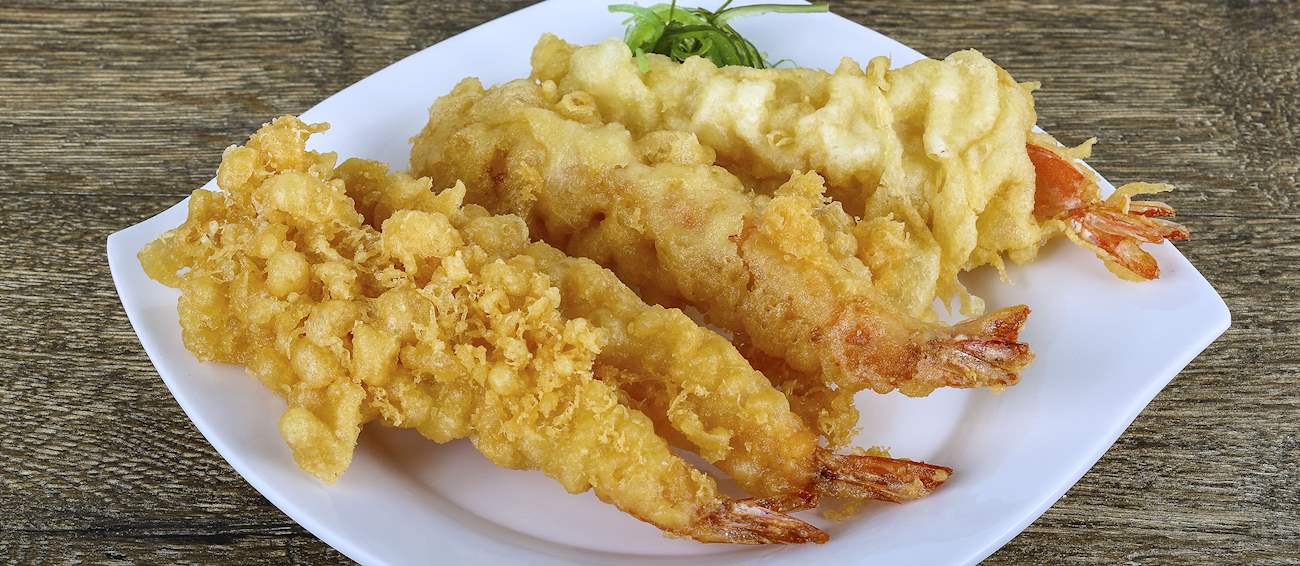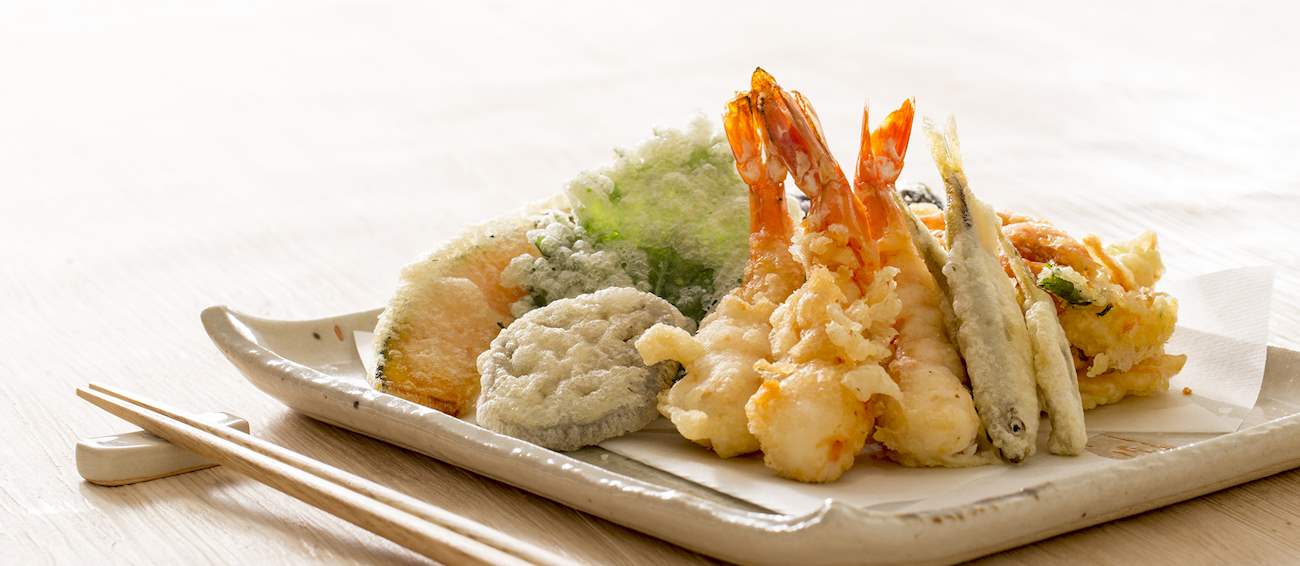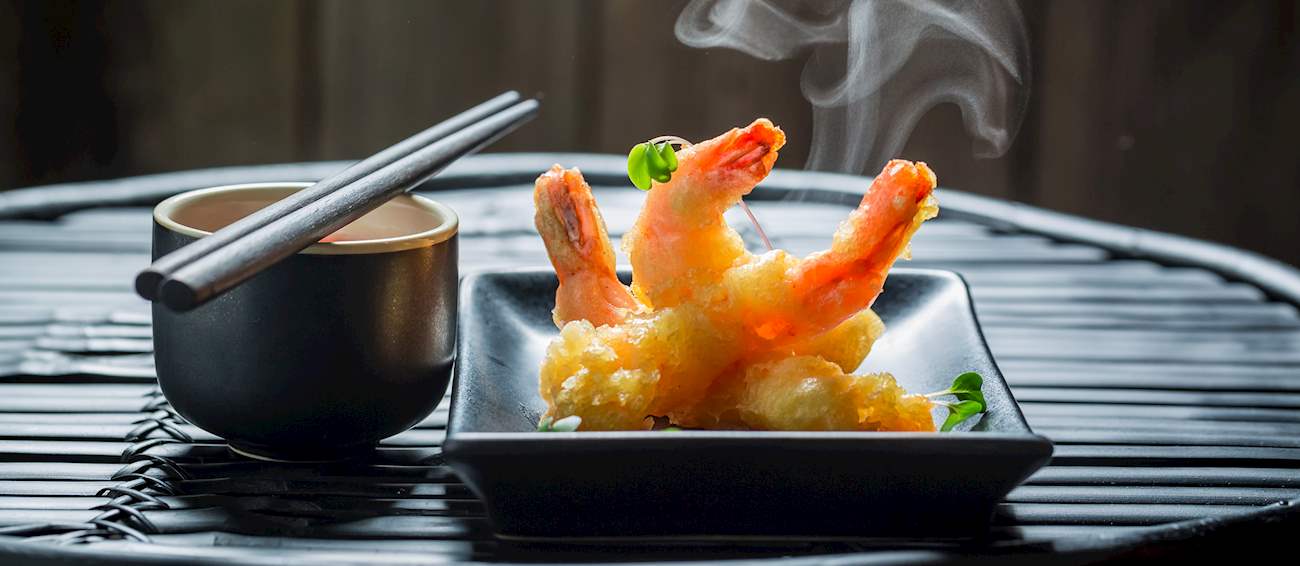Tempura
Although tempura is battered and deep-fried, the Japanese approach to food, characterized by clean flavors, simplicity, and minimalistic approach to ingredients remains intact. The most favorable ingredients for the dish include shrimp, scallops, squid, and small crabs, or vegetables such as shiitake mushrooms, asparagus, Japanese eggplant, and snow peas.
The batter is the most crucial part of tempura, consisting of flour, eggs, and water, keeping the ingredients moist and flavorful. Even though the dish is very simple, it has quite murky origins. The most popular theory says that the Jesuit missionaries who came to Japan from Portugal in the 16th century were the most probable inspiration for the dish, consuming vegetable and seafood fritters on ember days (days on which no meat was allowed to be consumed).
Another theory says that battered and deep-fried food was introduced to Japan by the Chinese, initially embraced by Zen priests who wanted to make their vegetarian diet more flavorful. Regardless of the origins of tempura, it remains an iconic dish that is served in a wide variety of ways: on its own, over rice, accompanied by tentsuyu or soy sauce, or even as a filling in sushi rolls.



